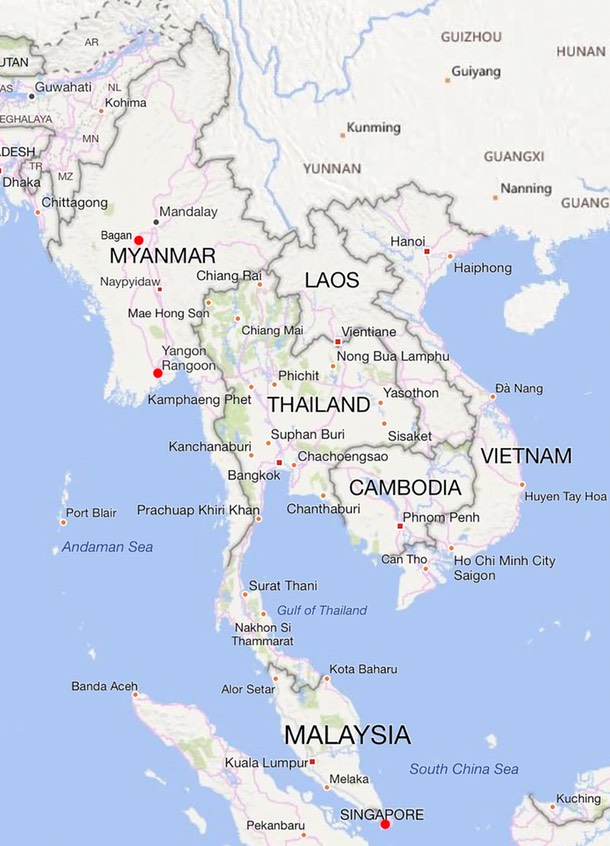Singapore & Mayanmar
We had the opportunity to visit Myanmar (formerly Burma) in January, 2017, for the Alliance Schlumberger-Asia reunion of retired Schlumberger engineers. On the way there we stopped in Singapore for a couple of days for some sight-seeing and to adapt to the time changes.
Click here for details about our itinerary.
Upon arrival in Singapore we checked-in to the Intercontinental Hotel on Middle Road downtown and started exploring the city that afternoon. Singapore is a very modern, clean and safe city with a number of very impressive sites, including the Botanic Gardens, Marina Bay and Gardens by the Bay. We used the subway to get around the city.

After two nights we departed for Yangon (Rangoon) to meet with former Schlumberger colleagues at the reunion. We stayed at the Inya Lake Hotel, not too far from downtown. The hotel property was built by the Soviets in the mid-50’s and the large rooms were clean and comfortable.
Myanmar is a country with a difficult history, especially in the 20th century and the early years of the 21st. A former British colony from the mid-19th century, it was occupied by the Japanese during WWII, followed by independence and years of ethnic civil wars, socialist governments and military rule. The predominantly agrarian country has significant mineral wealth including gems and some oil, but most of the populace is very poor. The infrastructure is being developed but at a slow pace.
Tom had visited Burma on business in 1985 and was excited to return to see much had changed. The new airport was a promising sign, and inside the city we saw some newer buildings. As a whole, though, the poor state of the economy was on display.
Most of the time was occupied with organized tours, but we also had some free time. There is no subway and the bus system wasn’t appealing, so we explored the city using taxis--plentiful and cheap, if a little old. The first afternoon we set out for Scott Market. Later in the week visited the Gem Museum and Keraweik Palace.
The organized tours included Yangon sightseeing by boat on the Irrawaddy River, the Secretariat Building (a British-era relic undergoing restoration), the huge Shwedagon Temple, and a visit to the pagodas in Bagan, a city in central Myanmar. Tom was confined to quarters the day of the Bagan trip because of food poisoning, so Linda went without him.
Contrasts
Singapore and Myanmar are at the opposite ends of the spectrum in terms of development, culture and politics.
On the one hand, the Republic of Singapore is very modern, rich and well-developed. It is small in area but very densely populated with 5.6 million people living on an island of 278 sq. miles, or less than half of the city of Houston. It is a global commerce, finance and transport hub, with the third highest GDP per capita in the world. It ranks high in education, healthcare, life expectancy, quality of life, personal safety and housing. Singapore has an elected Parliament but with a semi-authoritarian one-party rule.
The Republic of the Union of Myanmar has a population of about 51 million with a GDP about 1/10 that of Singapore. Even with considerable mineral wealth, long-running civil wars, military dicatorships and socialism have resulted in a stagnant economy. They are a major producer of methemphetamines and opium. The Burmese have a good education system with about 90% literacy, and they have the potential for a significant tourist business. But the level of corruption and civil strife will make its development difficult. The democratic reforms enacted over the past few years lead to some sense of optimism.